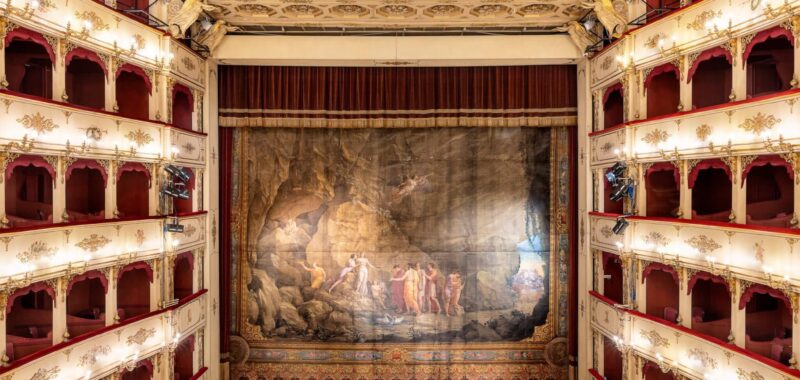Located in Pesaro, Italy, Teatro Rossini is a theater that understood its architecture to be part of the performance. The horseshoe-shaped gallery, tiered boxes, and fresco ceiling—all hallmarks of its 18th-century glamor—are no doubt as dramatic as what has and continues to grace the stage. Rossini dates back to 1758 when the main parts of the gallery were first built and designed by Ambrogio Petrocchi. It was later completed by Antonio Galli Bibiena.
The theater has been extended and renovated through its time but the latest addition comes at the hands of STARTT, Simone Capra, Claudio Castaldo, and Dario Scaravelli’s studio of architecture and territorial transformations. The project, titled FLEXI, is conceived of as a “theater within a theater”: a new dynamic performance space that can be easily reconfigured to match the dance, drama, concert or other performance, as well as accommodate community gatherings.

